When photographing, along with the settings excerpts, aperture, ISO and image quality, one of the most important parameters for a SLR camera is the correct setting of the focus mode and method.

Focus on Nikon
Nikon has many focus options with different combinations of focus modes and focus areas. Usually focusing on modern Nikon DSLR cameras occurs when pressing the shutter button halfwayor by pressing the dedicated AF-ON button.
Focus Modes:
'AF-S' or 'S' (Auto Focus Single) - focus mode camera, in which the camera, when the shutter button is pressed halfway, focuses on focus, and when a successful aim is achieved, it stops focusing. Once pressed - once focused... In the manuals for cameras, the mode is often translated as'Single AF Tracking'. To change the aiming accuracy, release the button and press it again. The mode is suitable for static scenes.
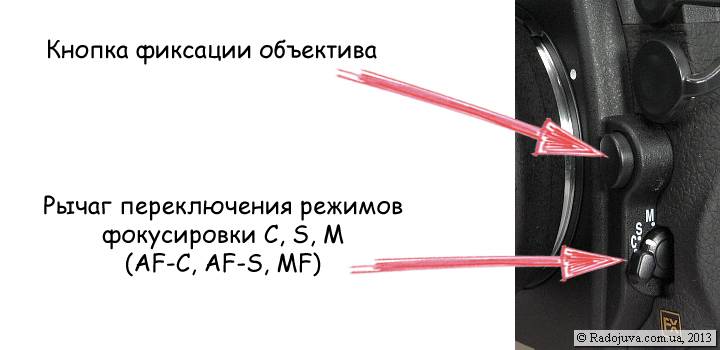
Focus mode switch Nikon D700. The same is available on cameras Nikon D300, D300s, D200, D1, D2, D3 etc.
'AF-C' or 'C' (Auto Focus Continuous) - tracking continuous (continuous) mode of automatic focus of the camera (in the instructions it is often translated as'Continuous AF Tracking'). When the shutter button is pressed halfway, the camera constantly tries to focus correctly. Pressed the button - and the camera constantly monitors the focus. A very useful mode when subjects are moving or composition changes.
AF-A (Auto Focus Automatic) - automatic focus mode selection camera. In this mode, the camera can choose to work in AF-S or AF-C mode. Basically, all amateurs shoot in AF-A mode and often do not even suspect the presence of other modes. I noticed that the mode AF-A more often behaves like the AF-S mode.
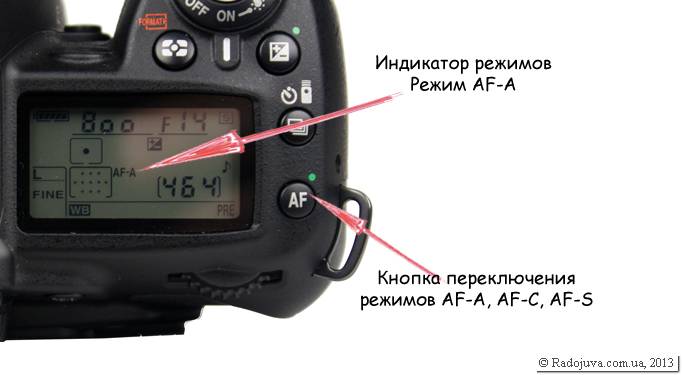
AF-A, AF-C, AF-S mode selector on Nikon D90
AF (auto focus) - general auto focus mode. The mode is enabled on the camera itself, not to be confused with the 'A' mode on the lens itself.
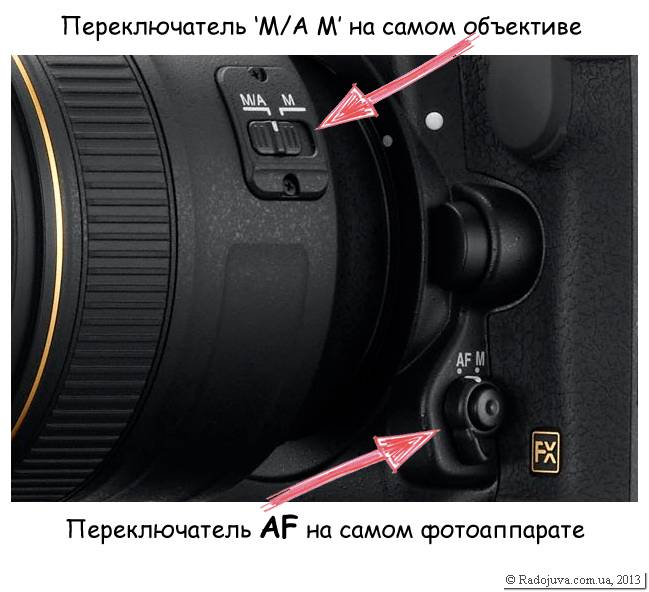
AF focus mode switch (lever) on the camera
MF (manual focusing) - manual focus camera... The mode is activated using the camera menu. Usually only cameras without a focus motor have this mode. In this mode, you need to manually rotate the focusing ring on the lens to achieve correct focusing. On the one hand: manual focus can be difficult for beginners, on the other hand: it is A vital focus method for advanced photographers and professionals. Manual focus on the CZK is one of the major advantages over conventional digital cameras (soap dishes). Very often, the automation of the camera and the lens cannot determine how to focus correctly and to achieve optimal focus, just switch to manual mode and point the camera manually for precise focus.
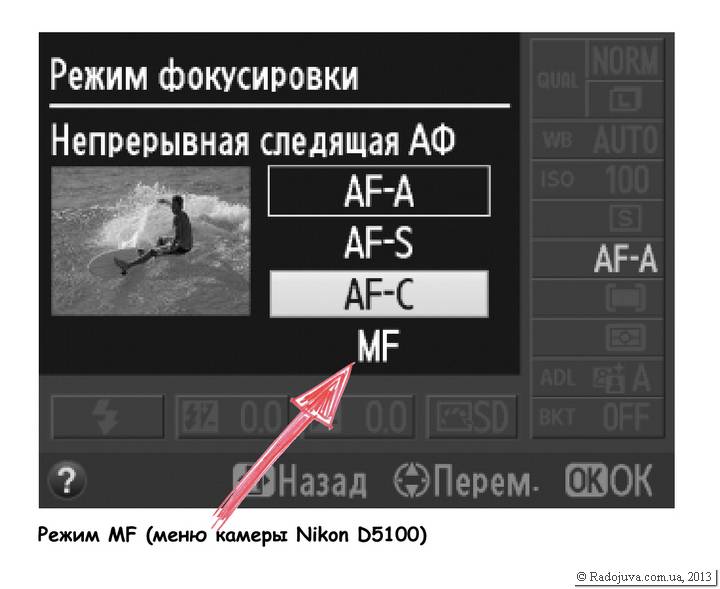
Focus Mode Switch Using the Nikon D5100 Camera Menu
M (M - manual focusing) - manual focus on the lens or on the camera. Same as MF. Attention: Not all lenses have a focus mode switch, such as a lens Nikon 50mm f / 1.8D AF Nikkor It has no focus switches at all. It's important: in order to switch to manual focus mode MF with a lens that does not have a focus mode switch, you need to switch the focus lever to mode M on a camera with a focus motor; on a camera without a focus motor, only the MF mode with such a lens will always be available. About different types of lenses and cameras is described in detail in the section Nikon Lens Differences.
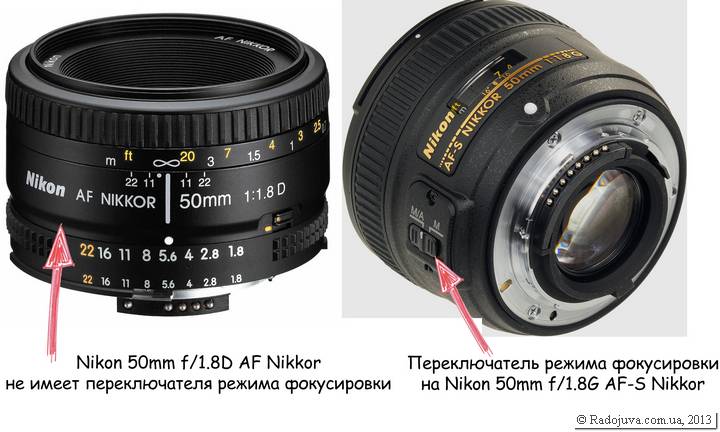
Lens with focus mode switch and lens without focus mode switch
A (Auto) - auto focus mode lens. In this position of the focus switch on the lens, only automatic focusing with the lens is available. Attention: not all lenses have such a focus operation switch, for example, the switch on the lens is shown below Nikon 85mm f / 1.4D AF Nikkor.
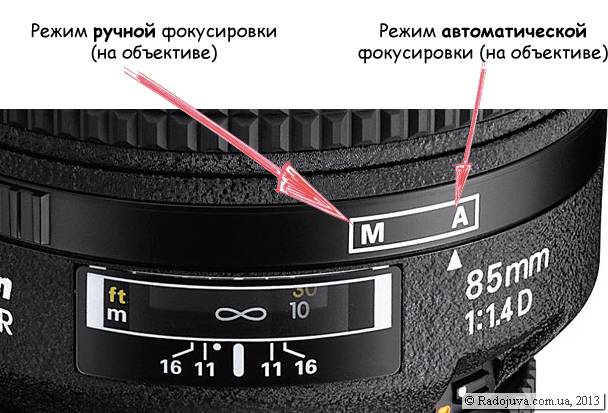
Example of a manual or auto focus lens
M / A (autofocus with manual override) - automatic focusing lens with priority of manual control. Attention: not all lenses have this focus mode, the example below shows the switch on the lens Nikon 85mm f / 1.4GN AF-S Nikkor. This mode implies auto focus with instant manual focus adjustmentand the lens does not need to be set to focus mode 'M'. You can read more about this mode. here.
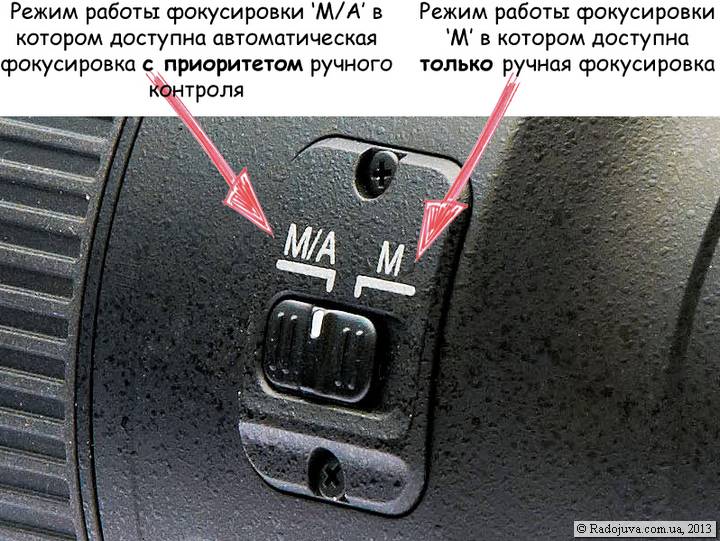
This is how the switch of focus modes on the lens with support for MA-M mode looks
AF-F (Full Time Servo Auto Focus) - continuous tracking focus mode for video shooting. Attention: This focus mode is only available on modern cameras with the ability to record video. This mode does not work when taking pictures. Usually you cannot find the mode in the menu AF-F, it is only available in live view when entering the info menu. This is a very useful mode, it allows you to record with constant auto focus. This mode is available only in cameras starting from Nikon D3100.
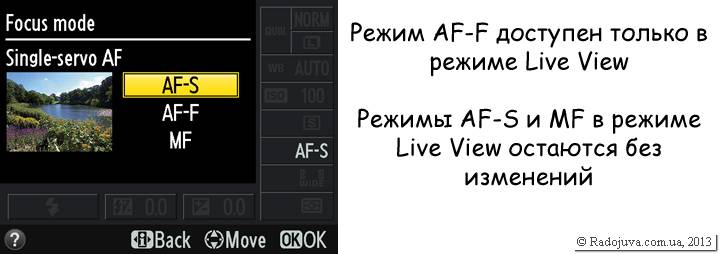
AF-F mode for shooting video
Important: due to the fact that all Nikon CZKs have different controls and different menus, each camera switches its focus mode in its own way. In the general case, M, AF, S, C is responsible for choosing the focus mode switch near lens mount for cameras with a focus motor and settings in the menu of the camera itself. For non-powered cameras, the focus mode is selected only through the camera menu. Different combinations of settings for different types of cameras are shown in the diagrams above.
Damn important: if you use a camera with a focus motor, and on it is a lens with auto focus but without a focus motor and without a focus mode switch on the lens itself, for example, a bunch Nikon D90 (camera with motor) and lens Nikon 85mm f / 1.8D AF Nikkor (without focusing motor and without focusing mode switch) - for manual focusing, be sure to switch the lever near the camera mount to the 'M' position, otherwise when focusing manually can damage the camera.
A number of cameras from Nikon have a built-in rangefinder (focus indicator in the viewfinder). The rangefinder in the viewfinder can tell in which direction you need to rotate the focus ring on the lens in order to achieve the correct focus. The range finder works both with automatic and manual focusing. Rangefinder is in the cameras Nikon D3100, D5100, D700 etc. In general, on older lenses that could not focus automatically, there is a special focusing scale, which indicates the distance to the focusing object. It's a pity when using the old AI-S optics on younger Nikon cameras, the rangefinder refuses to work. With manual optics, the rangefinder only works on older Nikon cameras.
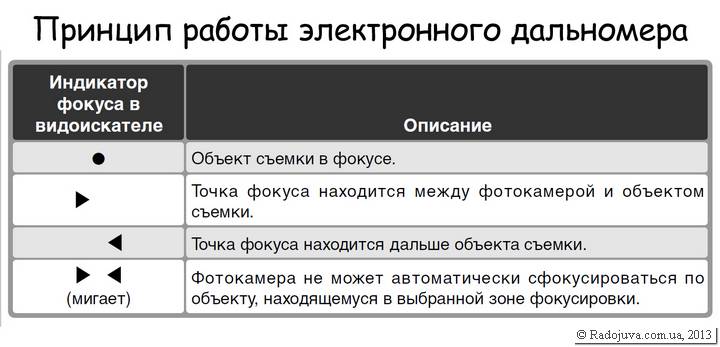
The principle of operation of the electronic rangefinder
On any Nikon CLC camera, the green circle in the viewfinder in the lower left corner of the viewfinder is responsible for the accuracy of focusing on the selected focus point. When it is on, this means that the sharpness at the selected point is normal. The green dot (focus confirmation point) is an indispensable tool when working with old class lenses AI-S and similar, for example, such as Nikon 100mm F / 2.8 Series E MF
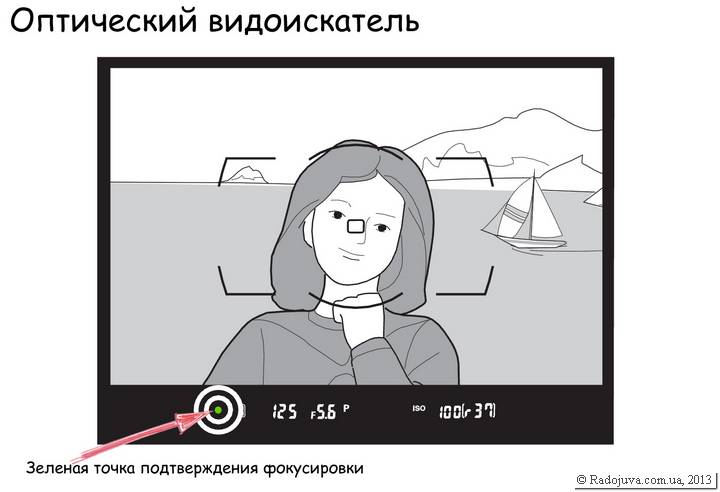
A green dot that confirms correct focus
Advanced cameras have fine-tuning the focus: Release priority and Focus priority in AF-C and AF-S mode.
Usually in AF-C mode, the choice is:
- FPS frequency - the shutter release is more important for the camera than the focusing accuracy, this is called release priority
- FPS + AF frequency - the shutter is more important for the camera, but it also takes into account the focusing accuracy (not available on all cameras)
- Focus - the focus is more important for the camera, not the shooting speed.
Using the priority setting, you can set what is most important when shooting - focus, and then release the shutter, or release the shutter and ignore focus. I set AF-S priority to focus priority mode, AF-C to shutter priority mode.

Setting Focus Priorities
Important Note:
Younger Nikon cameras do not support shutter priority mode (release priority). The exact list of cameras, as well as other useful information on limiting priorities, can be found in the section “Unpleasant restriction of Nikon entry-level cameras and its solution", As well as in the section"Restructuring AF-S, AF-C modes when working with an external flash. Features Focus Focus".
Live View
live view allows you to turn a complex SLR camera into an ordinary soap box, that is, you can focus (photograph) using the large display of the camera itself, and not through the optical viewfinder (peephole). In Live View, focus is based on contrast. This method is much slower for normal focusing through the optical viewfinder. Moreover, the difference in focusing speed in Live View mode and through the optical viewfinder can be tens of times. Some cameras have two focusing modes in Live View mode. The first one is “tripod” focusing, it is done as on conventional digital cameras (dichotomously, in contrast). Second, you can frame the frame through Live View, but when you press the shutter button to focus, the camera turns off Live View, focuses through the usual focusing system, and then turns on Live View again or takes a picture. For a simple description of how Live View works, see Dmitry Evtifeev’s blog.

How Live View Works
Important:
camera Nikon D700 и Nikon D300 in Live View and Tripod sub-modes, focus only when AF-ON button is pressed.
Focus Points and Focus Areas
Each camera has a different number of points and areas through which it can focus. A special module is responsible for focusing in the camera, which is located at the bottom of the camera’s mirror. The focusing module just calculates the phase values, on the basis of which it gives a command to perform focusing. In fact, modern central control valves have two mirrors, the second mirror serves to perform focusing through the focus module, in more detail here... Usually, a focusing module consists of a certain number of points (zones) on which focus analysis is performed. For 2012 Nikon has cameras with 3, 5, 11, 39, 51 focus points. The number of points affects the usability and focusing accuracy of the camera. You can read in more detail about focus systems on Nikon cameras.
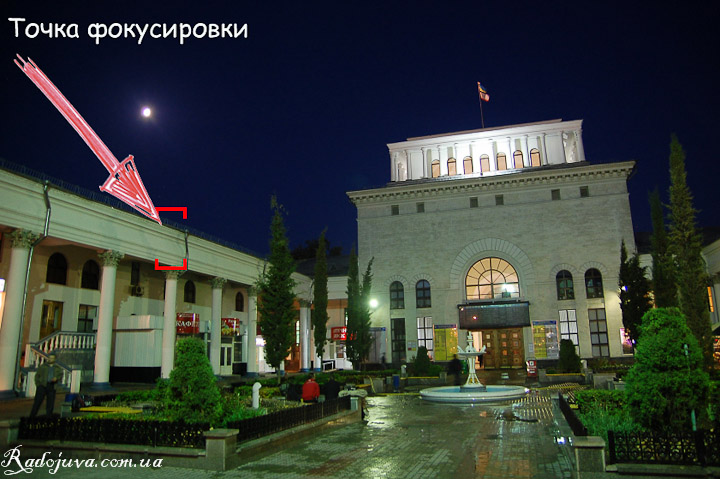
The image shows the focus point where focus is achieved.
For working with focus points, the settings are responsible. AF-area mode.
- Automatic (auto-area AF), denoted as a white rectangle. Focuses on the closest subject using all available points.
- Dynamic (dynamic-area AF), focusing works on only one point, but takes into account information with adjacent points
- Single Point AF, focuses on only one point.
- Additional: 3D-tracking, or the choice of several zones. Such settings are not available on all cameras and often they are sub-functions of the dynamic focus area selection.
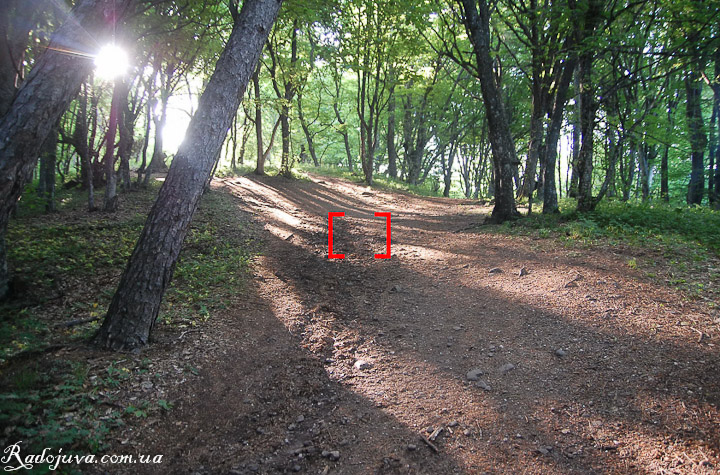
Points and focus method: AF-S single point
Important:
It’s very convenient to set the choice of the focus area method for amateur and advanced amateur cameras using a soft key (as I did on Nikon D90) This will allow you to quickly switch between focusing on a single point, automatic zone selection, dynamic mode, 3D tracking, etc. On Nikon professional and flagship cameras, a special zone switch is provided, which simplifies the work with professional equipment.
Attention:
in manual focus mode (M, MF), only one focus point is available.
Important:
A number of cameras can show in the image at which point or group of points the focus was performed. When viewing a picture, you can activate a mode in which the focus points are indicated by squares. This mode is supported only by professional cameras of the type D200, D300 and all full-frame. This is convenient because when setting up a quick preview of the image on a 1 to 1 scale, scaling is done exactly at the focus point at which the shooting was performed. This allows you to quickly check and select good sharp pictures. On advanced amateur and amateur cameras, to view the correct focusing, press the zoom button, and then use the selector to find the area in the image by which focus was performed. If your camera does not have a function that shows at which point the focus was performed, you can use ViewNX, which comes with the camera. Focus points can be displayed on the computer display. This is sometimes very helpful. In the sample photos, I just copied the work of ViewNX 2.
Important:
ViewNX only displays focus points on the computer when the picture was taken in AF-A, AF-S, AF-C modes with focus priority. If AF-S, AF-C with shutter priority is selected, the program will show focus points only if the camera was sure that the focus was correct.
Important:
Not all Nikon cameras allow you to change the area and type of focus when using the automatic modes (green mode). In modes P, A, S, M, everything can be customized to your taste.
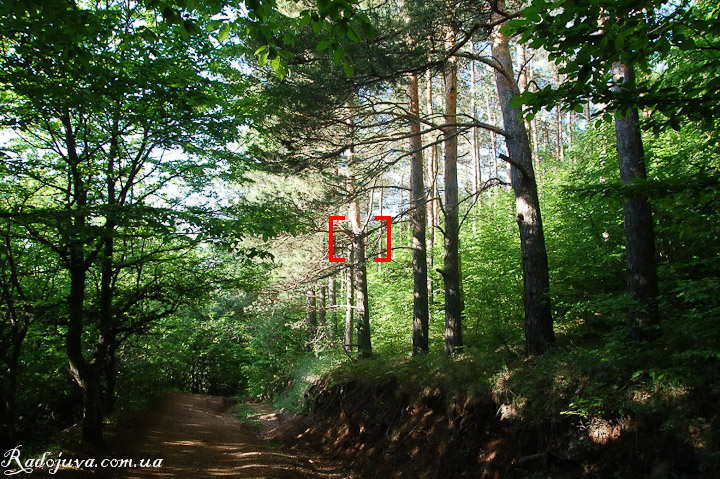
Single point focus. AF-C focus mode
Focus point loop function
This function simply allows you to move the focus point in a circle, thus looping it around. When the rightmost point is selected, when you press the selector right, the focus point will go to the leftmost position. This function simply allows you to speed up the work when focusing on a single point.
Wide and standard focus area
In some cameras, you can choose a wide focus area, in contrast to the usual. A wide focus area reduces the number of focus points (zones). For example, for Nikon D200 With 11 focus points, 7 wide areas are created. Optically in the viewfinder, the zones will be larger in size than the dots. This sometimes simplifies the work with the camera.
Focus adjustment (alignment)
Sometimes the lens may malfunction and focus behind the subject (back) or in front of the focus object (front). In the people, such a lack of lenses is called back focus, front focus (back and front focus). Some cameras may adjust to the “wrong” lens. To do this, you need to find the focus adjustment in the camera and adjust the focus. Only have tuning Nikon D300, D300s, D500, D7000, D7100, D7200, D7500, D700, D750, D780, D800e, D800E, D810,D810a, D3, D3s, D3x, D4, D4s, D5, Df, D600, D610.
Focusing with Dark Lenses
Almost all Nikon cameras can focus without problems automatically only when using lenses with apertures up to F / 5.6. This is indicated in the camera manual. When using lenses with a smaller aperture, such as the Tamron 28-300mm F / 3.5-6.3 XR Di VC LD Asph (IF) Macro, it may be difficult to focus on the F / 6.3 aperture. Also, when using teleconvertersthat decrease the effective aperture value of the converter lens, focusing problems may also occur. Only a few cameras can focus without problems with F / 8.0 lenses. The limitation is related to the number of focus points that can work normally at F / 5.6-F / 8.0. You can find more details about which cameras and which focus points (zones) are used to work with 'dark' lenses here.

Single-point focusing with the Nikon D2Xs
Cross-shaped focus points (sensors) vs regular focus points
How many times I didn’t use one-point focusing, I did not find the difference in the quality of focusing using the cross-shaped point and the usual focusing point. Basically, cross-shaped focus points (sensors) are said to do a much better job of focusing than regular focus points. It is generally accepted that cross-shaped focus points are better at handling 'wire against sky' scenes.
Focus light
Nikon cameras have a special light bulb that helps focus in dark conditions. The light bulb simply illuminates the subject in focus and autofocus is easier to focus on. The backlight may not come on in AF-C mode. The focus light is often called the “spotlight” and is recommended to be turned off. Personally, I have the backlight turned off, but in poor lighting conditions I use a flash that has its own "red spot" with a long range. More details about the flashlight in photo tricks section.
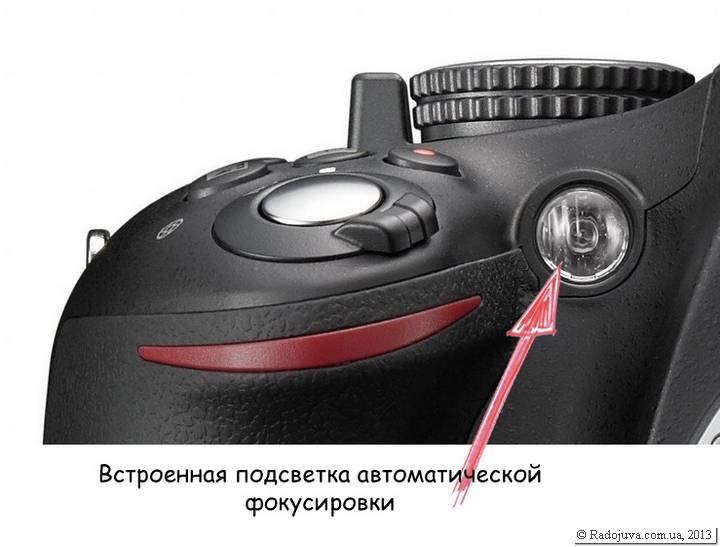
Focus light
Important:
Some Nikon CLCs for some reason do not illuminate the subject with the AF-assist lamp in single-point focus mode, if a non-central point is selected. As far as I know, all Nikon cameras provide auxiliary illumination with a lamp in single-point focus mode, if the center focus point is selected.
Important:
Flagship Niko camerasn such as Nikon D1, Dh, D1x, D2h, D2x, D2hs, D2xs, D3, D3s, D3x, Df, D4, D4s, D5 do not have a focus assist lamp at all.
Interesting:
Nikon cameras can be implemented very simply focus trap.
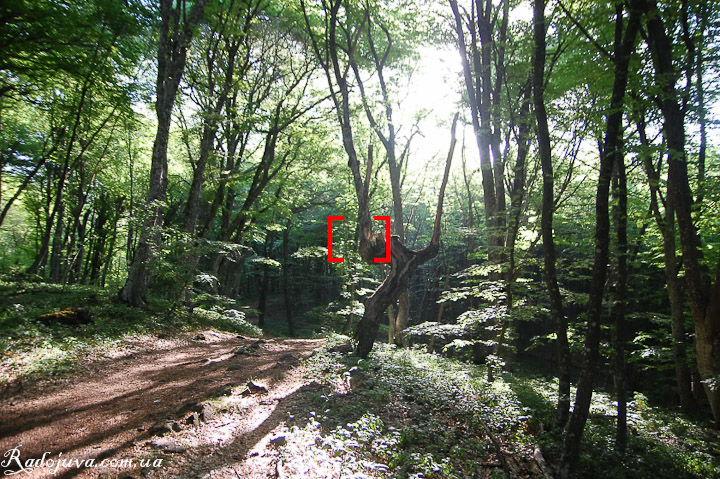
AF-S single-point focusing mode
My experience and recommendations on focusing on Nikon cameras can be found here.
Is everything complicated and little understood?
Then just turn on AF-A and the icon with a rectangular focus area. Automation copes well with the main tasks. I recommend fully automatic focusing for home use. Sometimes fine-tuning the modes of the focus points does not justify itself.
Which Nikon camera focuses best?
Focus best Nikon D5 and Nikon D500 with the most advanced focus modules.
Comments on this post do not require registration. Anyone can leave a comment. Many different photographic equipment can be found on AliExpress.
Conclusions:
Learning how to deal with focus modes will help you more accurately and quickly achieve the desired result. I strongly recommend experimenting with the modes and focus areas on your camera.
Material prepared Arkady Shapoval. Training/Consultations | Youtube | Facebook | Instagram | Twitter | Telegram

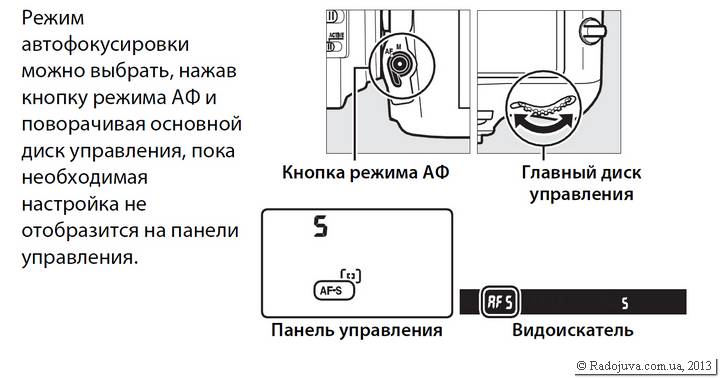

Hello! A question about sharpness, does this parameter depend more on the camera model or on the lens? I have D3100 18-55 AF-S, 50mm 1,8 AF-S and Helios 44, lack of sharpness in the photos, shooting mode VI is saturated. I got confused in your reviews of lenses, each one says that it is sharp enough, but still, tell me, please, the sharpest zoom. Thanks!
Depends on both the lens and the camera. The phrase is quite sharp implies that the sharpness of the lens is enough for most tasks. Good sharpness prof. lenses of the 17-55 2.8, 24-70 2.8 series, etc.
Arkady hello! Something I just can’t dig up the priority of descent to d90. Help!
He's not there.
AF-C is the trigger priority
Thanks! I knew that ((. I thought that I missed something. A big request then please indicate which camera you are using for review in the article.
PS. Articles are cool !!! Thank you very much!!! So much info on Nikon I have not seen anywhere else)). Yesterday I got an SB-700! and ring at the same time. Veeeeesh.
(Here are just a search on the site there. Sorry.)
Each review indicates which camera was shot, this can be found in the white bar with EXIF data in each example photograph.
Arkady, tell me please, I bought a Nikon d5100 18-55 camera, taking pictures in the afternoon on the street in good light in auto mode, the pictures come out in very contrast, a little dark and there is no softness of color?
Try to enable ADL - https://radojuva.com.ua/2012/01/hitrosti-na-nikon/
Good afternoon, I have a Nikon d5100, a whale lens 18-55, I can’t shoot with manual focus. At least kill me. What can I do?
Hello Arkady! Question: On the d7000 + lens 50 1,4 ... at a distance of 1-1,5 m from the model (one focusing point, manual mode M) everything is fine, focus is in place (by the eyes) ... but if you step back 3 meters 4, everything is smeared and it is difficult to find focus ... although it was focused on the model's face .... Can you tell me why the photo is smeared at a long distance? Thanks)
With open apertures, the focusing system is difficult to get into sharpness on distant objects.
Arkady, good day,
Here is this section of your article: "..." Loop focus points "function
This function simply allows you to move the focus point in a circle, thus looping it ... "
Could you explain what this is about? How the selector moves the focus points? On my D5100, it somehow does not work: "... when you press the selector to the right, the focus point will move to the extreme left position ..."
If it does not bother you, please explain what is meant here?
Thank you in advance.
Ed
when you press the selector to the right, the focus point will move to the extreme left - this is how it should be, this is the principle.
Arkady, thanks for your reply.
So I would like to ... But the scum (focus point) does not go over. Maybe it broke :( And it works in Live View mode. I wanted to understand something else for myself. The essence of what you wrote is a way to quickly move the focus point using the selector. And no more. So?
Yes, precisely for quick movement, no more.
Arkady, please tell me about adjusting the autofocus for Nikon D600. The manual for the camera says that adjustment is possible only for lenses with microprocessors. I have a Sigma AF 24-70mm F / 2.8 IF EX DG ASPHERICAL HSM lens. I don't really understand this, but it seems like it is without a microprocessor. And I have a clear focus on the front. Please advise what to do ... Can I adjust using this setting or just give it to the service center?
This lens has a microprocessor.
Thank you so much! then I'll try to adjust it myself ...
I have a D90 and 50mm 1.8G, Arkady, please tell me, is it necessary to manually switch the focus mode switch on the camera from AF to M for manual focusing with such lenses with an autofocus motor, or is it enough just to switch the M \ A to M switch on the lens and that's it? Thanks!
At 50mm 1.8G, you don’t need to switch M \ A to M at all, since in M \ A the lens has a focus priority mode. For the same it is written in this article.
Thanks for the answer. But why then on this lens in general this switch of focus modes? for cameras without a motor?
PS Just thank you so much for your site. there is simply nothing better ...
Just do not forget to like the reviews :(
I like AF-C single-point mode for portraits, but LANDSCAPE shooting, where should I point this point? or close the aperture harder so that everything is in focus?
camera d7000
Please tell me in the instruction manual for the DSLR and on many zhugih sites they write that it is impossible for the sun to fall into the frame. In many of your photographs, I see that the sun nevertheless falls, were there any consequences?
Sorry, just typing through a tablet :)
Please tell me in the instructions for the DSLR and on many other sites they write that it is impossible for the sun to fall into the frame. In many of your photographs, I see that the sun nevertheless falls, were there any consequences?
There were no consequences. As in any business, you need to shoot the sun with the mind and the right approach.
Good evening, Arkady, I encountered such a problem, I have Nikon d90, lenses are one Tamron 28-75f2,8, the other Nikon 55-200, when focusing on one AF-S point, very often, or rather 80% autofocus began to miss, re-read your articles about focusing, reset all the settings in the camera, but the improvement didn’t appear, I bought the camera in December 2012, before that there was Nikon d3100, which pleased me more than this model
After I reset the settings, I set everything up in a new way, the result is the same, I don’t really want to carry it to the service, maybe I'm setting something up wrong
I photograph mostly portraits on open apertures
Same problem. Sigma 18-50 2.8 and Nikor 35-105 3,5-5,6 lenses appeared practical almost constant back focus. I have not solved the problem yet
I liked the article, but I still can’t adjust the macro mode. I’m choosing the MF mode, I’m trying to adjust the focus but the image is blurry. Help because I can’t normally photograph the flowers near.
Good afternoon. I am an amateur photographer and I want to improve my skills in this matter. Previously, everything was photographed in auto mode on a mediocre number. apparatus, but I want to learn how to better understand this matter. I shoot mainly nature, landscapes, recreation, etc. sometimes portraits. I decided to buy NIKON D800. what do you say, maybe for a start the D600? the budget does not matter. Thanks..
You wrote "... With open apertures, the focusing system is difficult to get into sharpness on distant objects."
What advise, say, on a fix. 1,8? close aperture up to 2,8 or more?
Hello. Help me figure it out. I have a nikon d800,85 1.8g. When focusing on the focus point in daylight without an external flash, everything is fine. I cling to the SB-700 in the evening I try to hit the target in any way under 3-5 cm. From 24-70 2.8 nikon I did not notice this. What device is the weak link?
damn thank you helped fotik bought and parents and zbi all tormented a week))
Please tell me, I have Nikon d5100 and I bought Helios 44, before buying I read that it will work only in manual mode, but how to enable this same manual mode because Now writes that the lens is not attached
Using the image control wheel, such as here https://radojuva.com.ua/2011/03/rezhimy-fotoapparata-p-a-s-m/ (you need to select M)
How to change the focus point on the Nikon D800? For example, so that it was only on the left or only at the top. They gave me a play, but I can’t figure it out.
Hello, please help me sort it out ...
I have a Nikon D5100, a whale lens 18-55,
everything was fine and worked until I touched the lens (the camera was turned on) ...
although it didn’t hurt much, but now when you press the shutter button to focus, it doesn’t work and you have to turn it on the lens manually so that the focus works ...
maybe something broke there?
I read in the settings but there is nothing .. I thought maybe clicked somewhere but there is nothing in the settings to fix it ...
what to do? carry in the repair? can you advise?
maybe you hit the auto focus switch that is on the lens